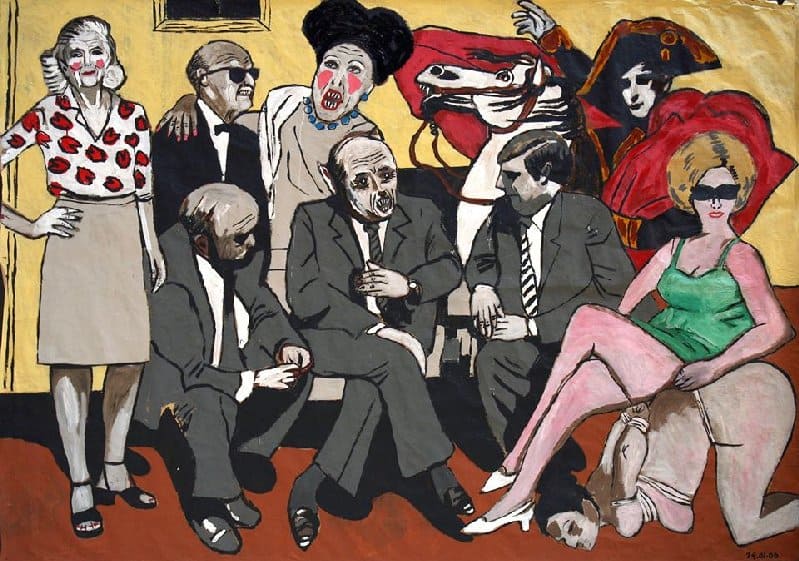José Miguel Rojas González is an artist’s artist. He likes big canvases, raw brush strokes, and bold political statements. Raised in Costa Rica, Rojas started off studying at the Casa del Artista in the mid-1970s, an angry and experimental era, and that early influence is still evident in his work. He lived in Europe and has shown his paintings across the United States. Each of his portraits is tough and unapologetic. Like Andy Warhol, Rojas studied screen-printing and shares the master’s style. He is perhaps the most fearless artist I have encountered in Costa Rica.
The massive Rojas retrospective now showing at the Central Bank Museum is called “Juego Sucio” (“Dirty Game”), and it exhibits decades of work, from small experimental pieces to paintings the size of garage doors. According to the museum’s press material, “Dirty Game” is a reference to Rojas’ interest in winners and losers, but I think the title is more interesting than that: Rojas’ aesthetic is often impressionistic and even sloppy, as if he had slapped paint onto canvas in a fit of rage. Other works are controlled and realistic, but they still bear earthy colors and gritty subject matter. Everything in Rojas’ world is somehow “dirty,” whether it is the mood or the image itself.
The subtlest example is “Soy Ese Beso Que Se Da” (translated here as “The Kiss You Give”), a portrait of a man and woman in mid-smooch. The composition is so clean that you might mistake it for a photograph, and it seems romantic at first glance. But there is also something illicit about their embrace. The colors are dark, the scenery is non-existent, as if their love exists in a vacuum. This is not the tropical eroticism you see in a traditional Tico painting. “Kiss” is part of a series, “The Hidden Eye of Pleasure,” a creepy title that confirms the noir undertones.
Far more acidic is “El Festín Macabro” (“The Macabre Feast”), Rojas’ reimagining of Leonardo Da Vinci’s “Last Supper.” Instead of Jesus and the 12 apostles, we see the faces of dubious political figures, from Latin American presidents to Colin Powell, gathered around a long table. On the surface of the table lie two bearded, dismembered heads, one of John the Baptist and the other of Che Guevara. Rojas doesn’t pull any punches: His heroes and villains are abundantly clear.
The subterranean Central Bank Museum, located beneath the Plaza de la Cultura, has given Rojas generous space to display his work, and guests will likely be taken off-guard by what they find. The portrait called “Adam and Eve” shows all the usual iconography – naked man, naked woman, snake – but the faces are unrecognizable splotches of color. “Imágenes de Poder” (“Images of Power”) is a black-and-white portrait of three men wearing suits. They look like G-Men, but their faces are also obscured. The only thing we know about this trio is that they are malevolent and should be feared.
As grim and unsettling as this exhibit can be, “Dirty Game” excels on every level: It is a handsome arrangement of provocative works by a superlative creative force. Rojas is a great artist, just the way Willem de Kooning and Francisco Goya were great, and it is exciting to see such a mainstream museum (named after a bank) presenting his works so nakedly. Not every curator would welcome Rojas’ morose rage. But these curators did, and Costa Rica is lucky to experience it.
“Juego Sucio” continues through Oct. 11 at the Central Bank Museum, Plaza de la Cultura, San José. 9 a.m.–5 p.m. ₡5,500 ($11). Info: Museos Banco Central website.





